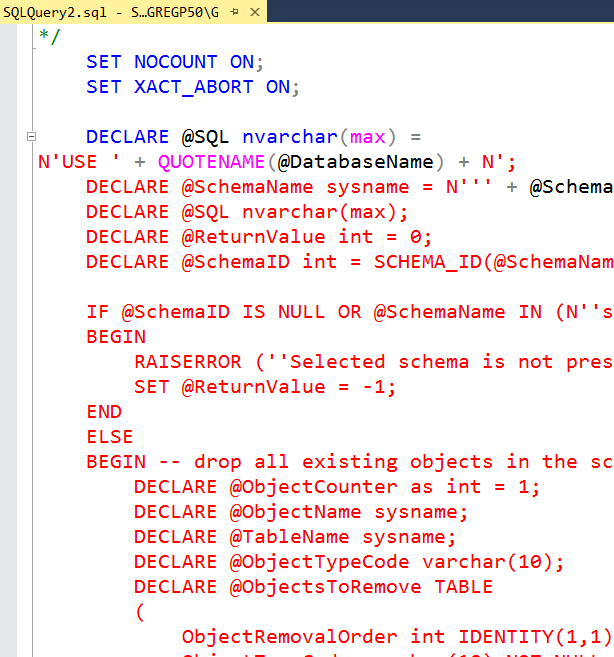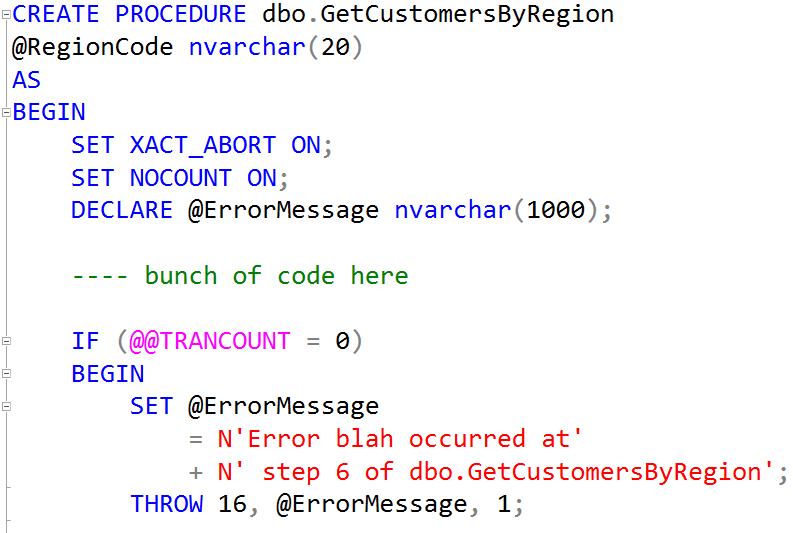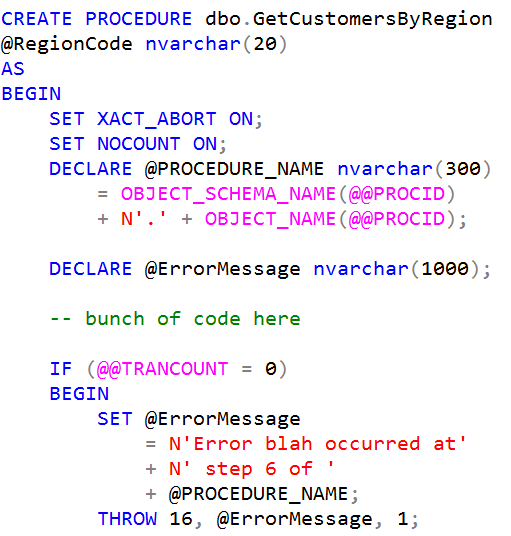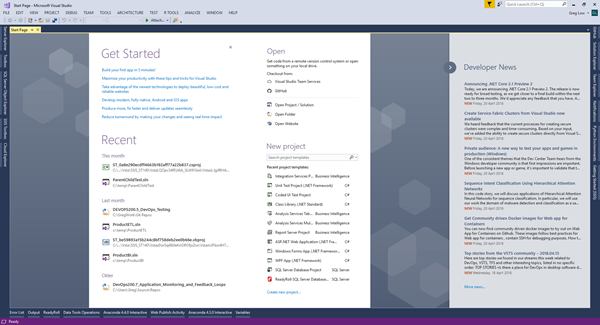Shortcut: Using line numbers and Go To in SQL Server Management Studio (SSMS)
If you ever have long scripts in SQL Server Management Studio and need to refer to a particular line, it can be helpful to have line numbers shown. This is even more useful if you ever need to write a set of instructions for someone on how to modify a query, or if you are trying to describe how a query works.
Instead of having a query like this:

2018-06-07




